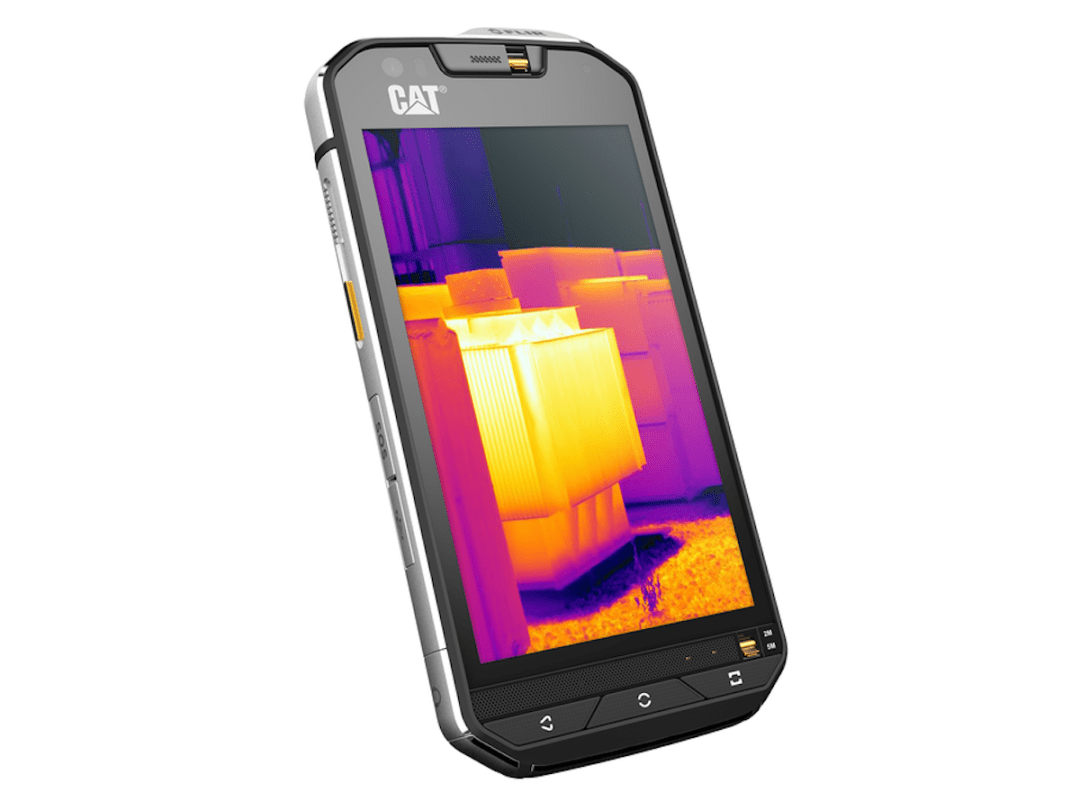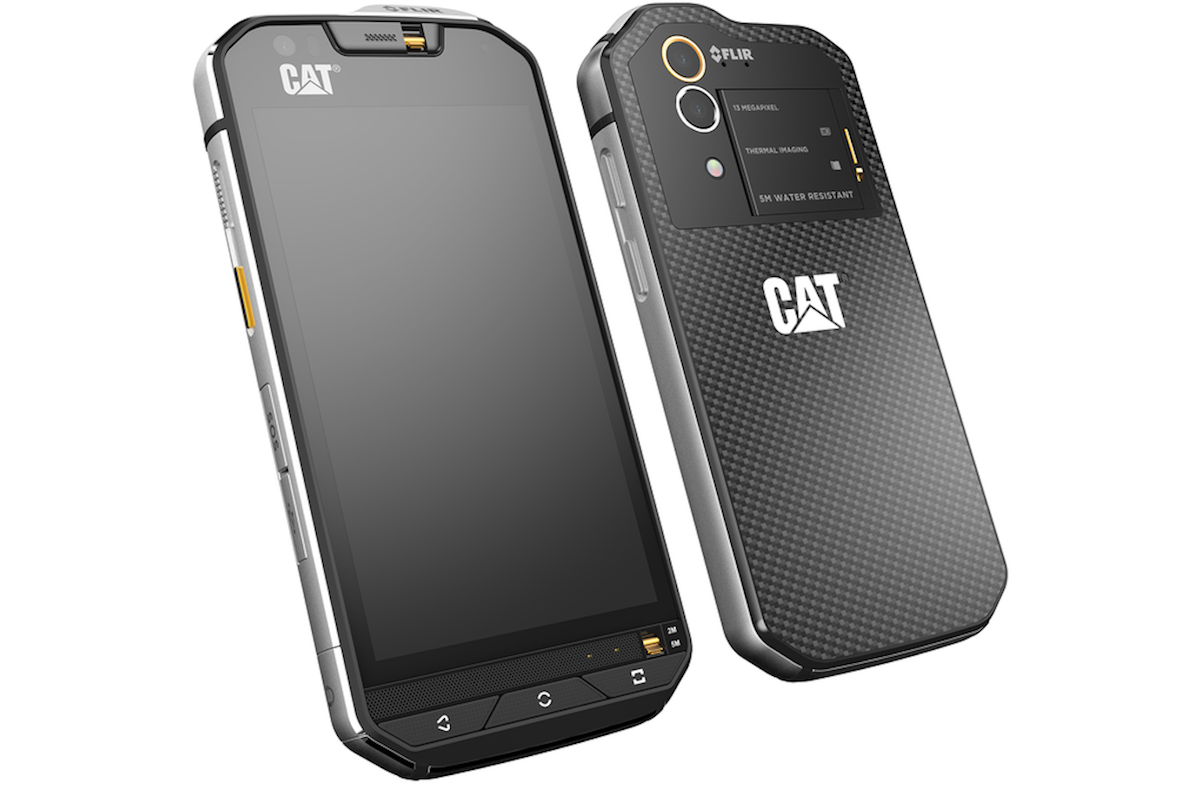The Cat S60 adds a thermal camera to an ultra-rugged Android phone
It's a mostly mid-range device, albeit with some very unique perks

It might seem strange that a construction equipment manufacturer would have its own phone line, but at least Caterpillar’s devices are appropriately rugged and designed to withstand both the work site and the elements. And the latest has another big feature.
Unveiled ahead of MWC 2016 next week, the Cat S60 is the world’s first phone to have a thermal imaging camera module built right into the device. It’s the same one seen in the FLIR One attachment available for Android and iPhone, which sells for US$250 on its own, but now it’s found right on the device above the standard camera.
Why have a thermal camera on your smartphone? Caterpillar suggests it’s made for electricians, builders, emergency service personnel, utility workers, and others who might need to detect heat or moisture while on the job. And surely it’s a fun trick to show your mates at the pub, too.
The camera adds an odd hump to the top of the phone, but that shouldn’t stop it from standing up to drops and other accidents. The Cat S60 has a die cast frame and thicker-than-normal Gorilla Glass 4 atop its display, and it’s rated to be drop-proof on concrete from up to 1.8m. The device is also waterproof up to 5m for as long as an hour, letting you use it for underwater shooting as well.

In other ways, the Cat S60 is mostly a mid-range device, with a couple higher and lower-end components. On the low end is surely the 4.7in 720p display, but at least the phone has a Snapdragon 617 processor with 3GB RAM, 32GB internal storage, a 3,800mAh internal battery, and a 13-megapixel back camera (5MP up front). Oh, and it’s rocking Android Marshmallow, luckily.
No word yet on when the Cat S60 will be available to purchase this year, but it’s already priced at €649 (about £500) or US$599 (about £415) – so we’ll have to see how an official UK price shakes out if it actually launches here.
[Sources: Cat Phones, 9to5Google]
Read More › Nextbit Robin review



